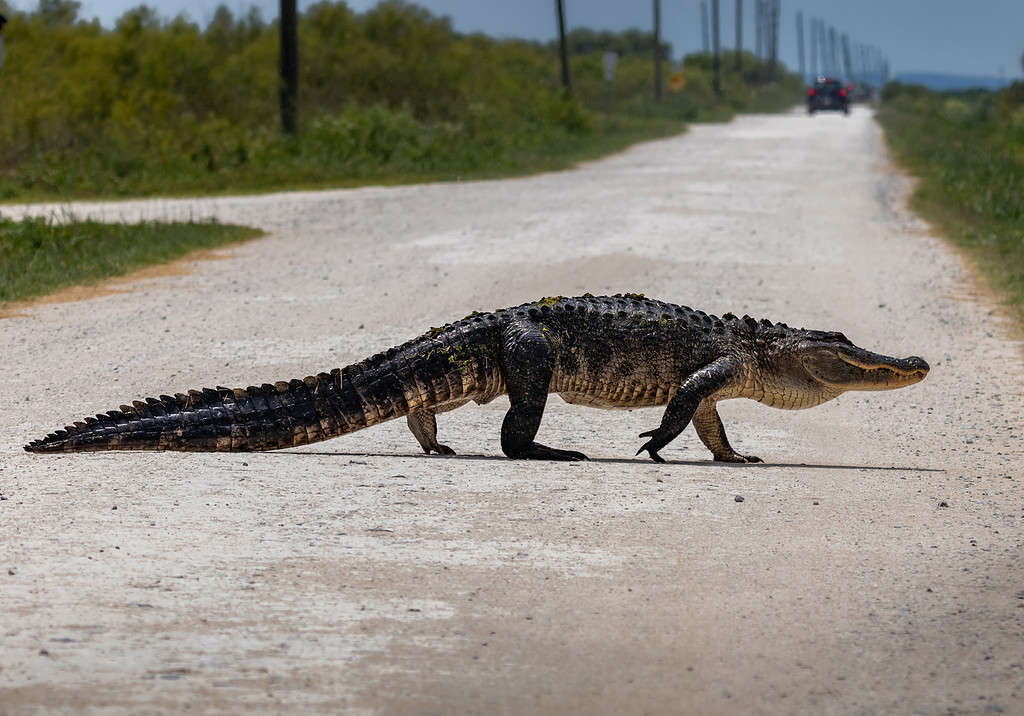
Alligators are nuisance animals in Florida. They block roadways and pose a risk to pets and children.
©Benjamin Klinger/iStock via Getty Images
Humans are an ever-expanding race requiring more land and resources to sustain our population. To maintain the population’s rapid growth, humans expand by leveling forests and encroaching on natural wildlife. This forces animals to adapt to their new surroundings, albeit through investigating human settlements.
Wildlife conservation groups and local wildlife government organizations work together to help humanity and animals coexist in the same areas. Sometimes, this involves removing certain animals that cause problems or damage to residential or corporate businesses.
These are nuisance animals, and there is a lot of information to cover to keep families and animals safe from dangerous situations.
What Are Nuisance Animals
A nuisance animal is any animal posing a threat to property or human health and safety. This definition slightly changes, depending on local government wildlife organizations.
Typically, a nuisance animal must fulfill these specific requirements:
- Currently or consistently causing property damage
- An immediate threat to human health
- Over a specific size and weight threshold for specific large mammals or reptiles
Squirrels
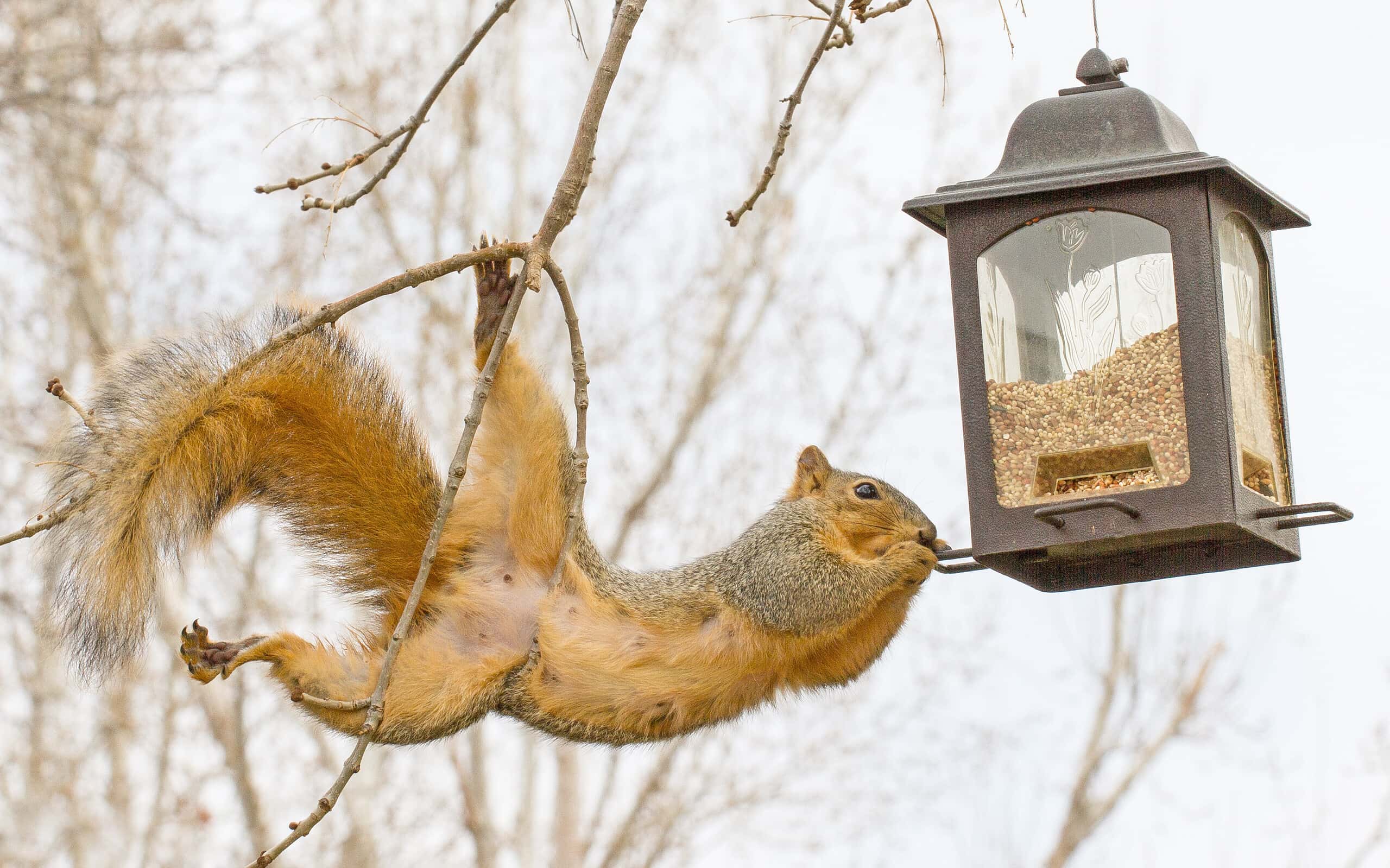
Squirrels perform impressive agility and gymnastics to reach birdfeeders.
©blewulis/iStock via Getty Images
There are over 65 different types of squirrels living in North America. Fox squirrels are seen across dry regions, while the eastern gray squirrel is prominent throughout the entire Eastcoast.
All squirrels feed on a balance of nuts, seeds, fruits, grains, vegetables, roots, and bulbs.
Squirrels are a nuisance throughout the country because of their ability to interfere with other wildlife. Families that enjoy birdwatching understand that squirrels chase away birds or steal seeds in the birdfeeders, preventing exotic birds from visiting a peaceful yard. Additionally, squirrels can climb trees and chew their way into rooftops or car engines to hide from cold weather or severe storms.
Depending on the state, animal control should be called to remove squirrels from inside the home to prevent further property damage. Unfortunately, squirrels stealing from birdfeeders is not considered a nuisance, but an act of general wildlife survival. Birdwatchers should prevent squirrels from stealing by placing feeders away from trees or fences and offering them alternative snacks.
Raccoons
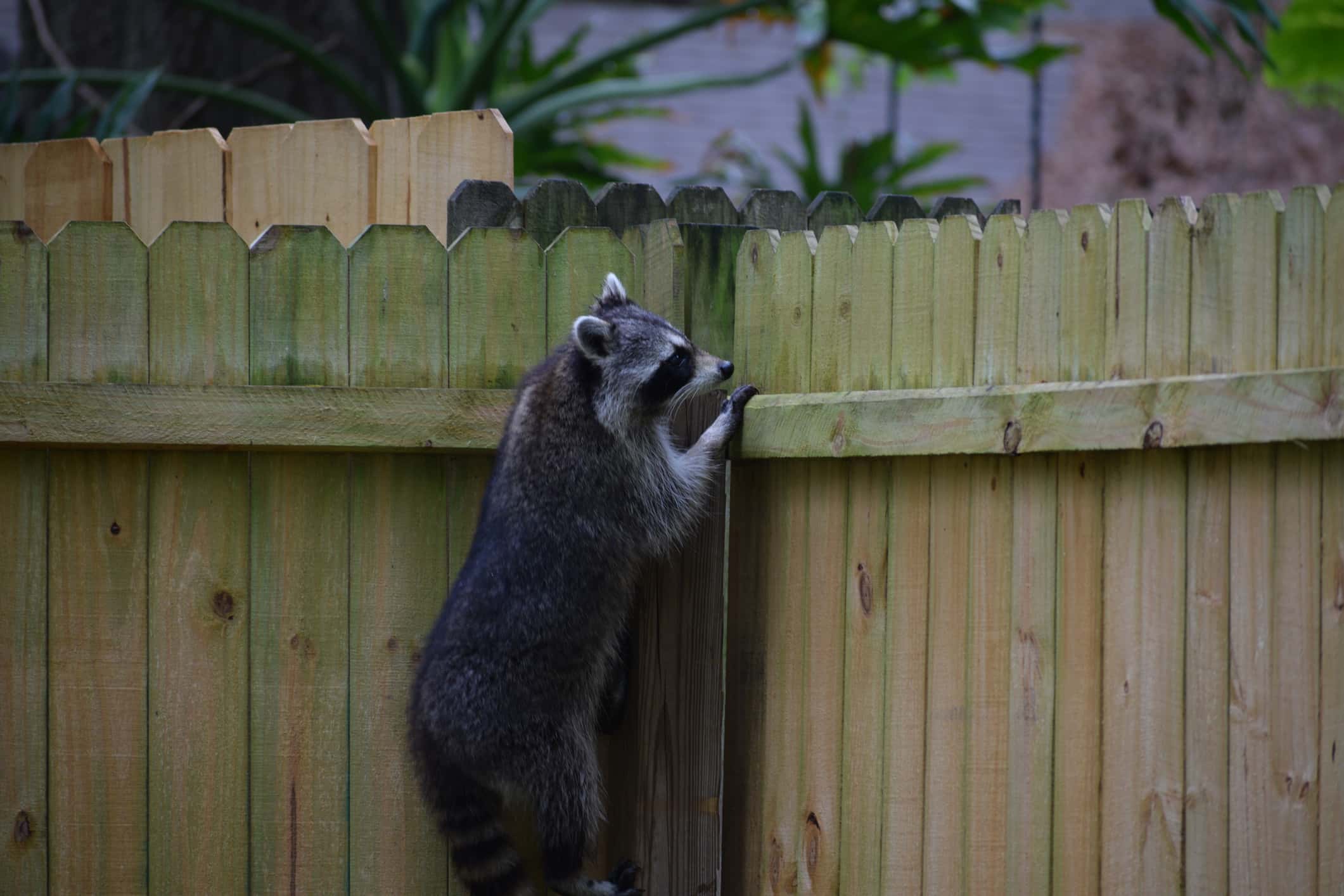
A raccoon can weigh between 18-36 pounds, putting great stress on a flimsy fence.
©humblebleufrog photo/iStock via Getty Images
Raccoons are adorable woodland critters with a bad reputation, despite being legal as exotic pets. These animals live across the U.S., preferring forests with sources of freshwater nearby.
They are opportunistic omnivores, capable of eating nuts, across, fruits, vegetables, grains, insects, rodents, birds, eggs, fish, and carrion (dead organic meat).
Raccoons use their excellent sense of smell to forage for food in residential neighborhoods, knocking over garbage cans and diving into dumpsters to feast on the assortment of discarded food. Normally, they do not pose a direct threat to humans, but they can cause extensive property damage by nesting in cars, damaging garbage cans, digging and damaging fences, or nesting under porches.
Prevent nuisance raccoons by contacting local wildlife or animal control agents to remove them from attics or basements, sealing off the property with strong fences that reach several feet below the ground, securing all garbage can lids, and using motion sensor lights or motion sprinkler systems to deter backyard activity. Raccoons are nocturnal animals and will be discouraged from entering the area with too much light.
Groundhogs
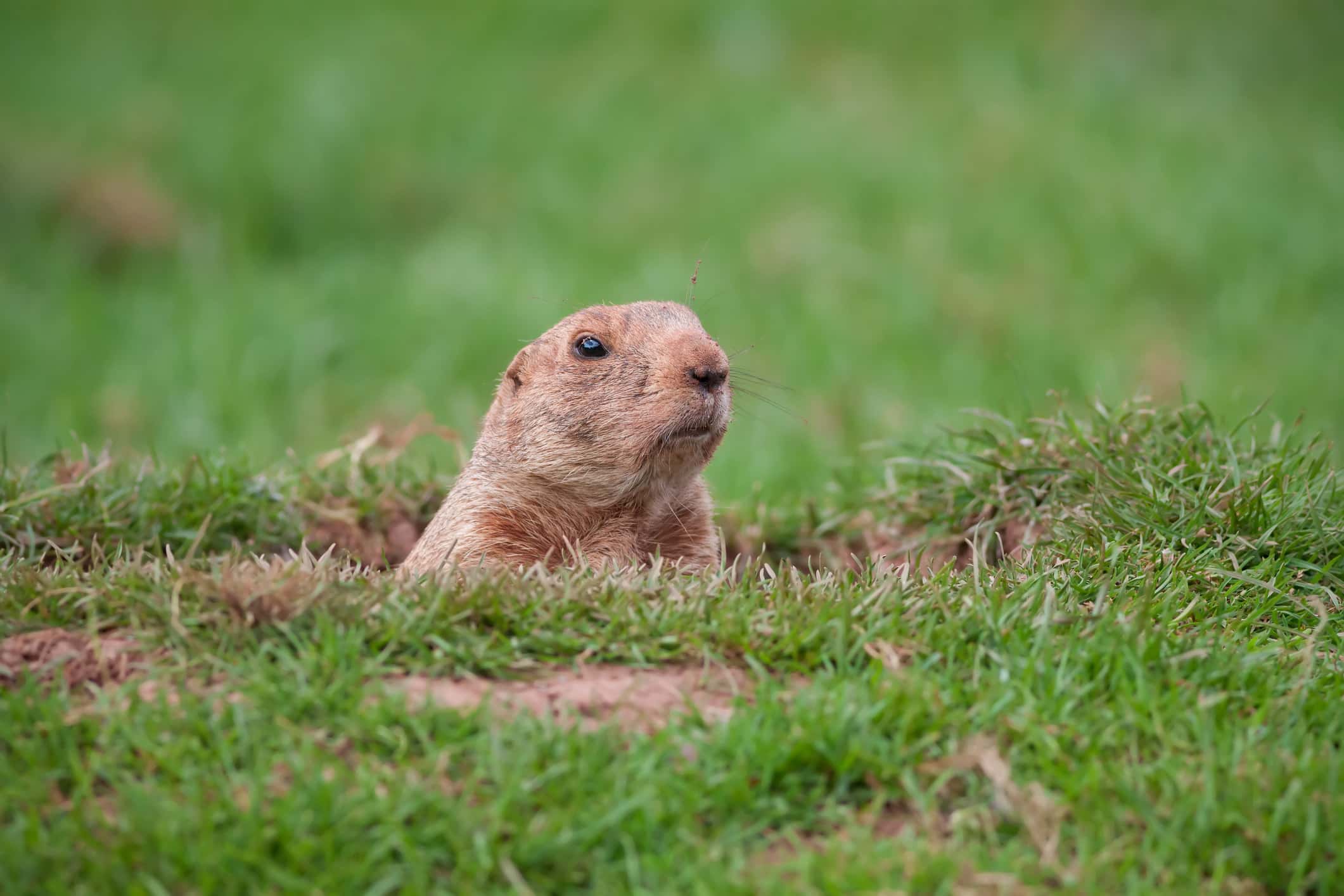
Large animals risk suffering from sprains and broken legs by stepping inside a groundhog hole.
©bahadir-yeniceri/iStock via Getty Images
Groundhogs (and gophers, marmots, prairie dogs, and voles) love digging in the dirt. They protect themselves by building community labyrinthian tunnels underground. Groundhogs can be found across the Midwest, with others in Alaska and Canada.
They are mostly vegetarians, eating grasses, vegetables, clovers, dandelions, bark, and twigs. But they supplement their diet with insects and worms for extra protein.
The problem with nuisance groundhogs is that they wreak havoc in gardens. Additionally, large-breed dogs like Great Danes risk breaking a leg by stepping inside one of their 8-12-inch holes. They also dig tunnels which may loosen the foundation of your house. Sometimes they chew underground cables and pipes, causing expensive home repairs.
Families can prevent groundhog damage by constructing large fences around the property that extend at least 18 inches underground. Homeowners should trim the grass, shrubs, and any bushes in the yard to prevent feeding. Lacing the ground with garlic and pepper shavings acts as a natural deterrent.
Bears
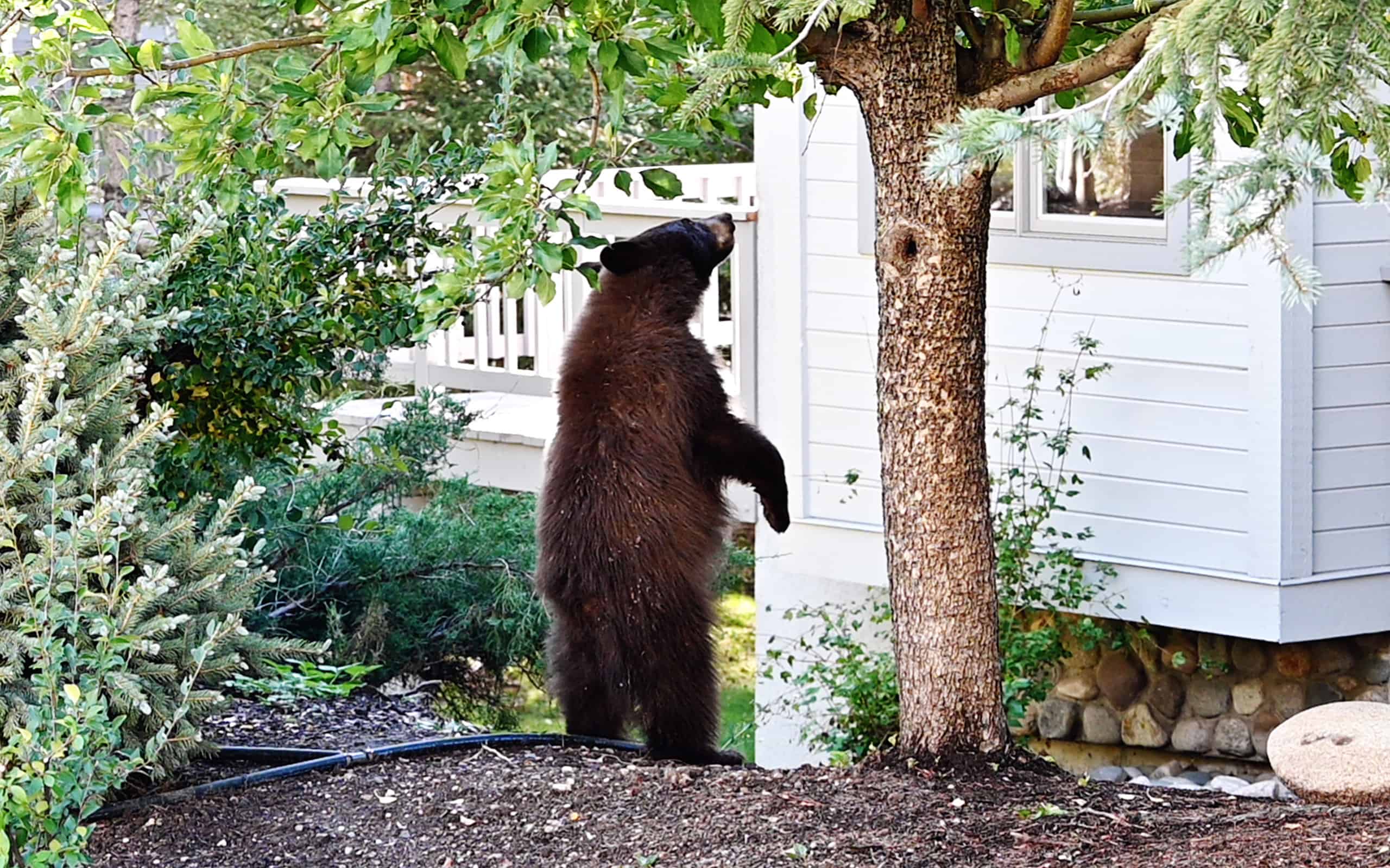
Families should avoid approaching bears and report any bear sightings when possible.
©steverts/iStock via Getty Images
North America has a few bears living across the country, most notably the black bear and brown bear. Black bears prefer forest and wooded habitats across the Eastcoast, while many brown bears are found across Canada and the Pacific Northwest.
Bears are primarily vegetarians but are active omnivores. This means that the majority of their diet consists of fruits, nuts, and berries, with protein from fish, deer, rodents, and carrion. They will also indulge in a honeycomb to satisfy their sweet tooth.
Bears are big animals that can cause a lot of damage and pose a threat to human health. While there are few reports of bear attacks each year, these animals cause a lot of property damage by breaking down fences, damaging garbage cans, and posing a risk to small pets.
Residents living near bears should contact their local wildlife office to report bear sightings and general activity near humans. All reports should have a precise location, time, and photo if possible. Families should seal all garbage cans, clean the yard after outdoor gatherings, and install yard security with sound and light sensors to deter bear activity.
Alligators
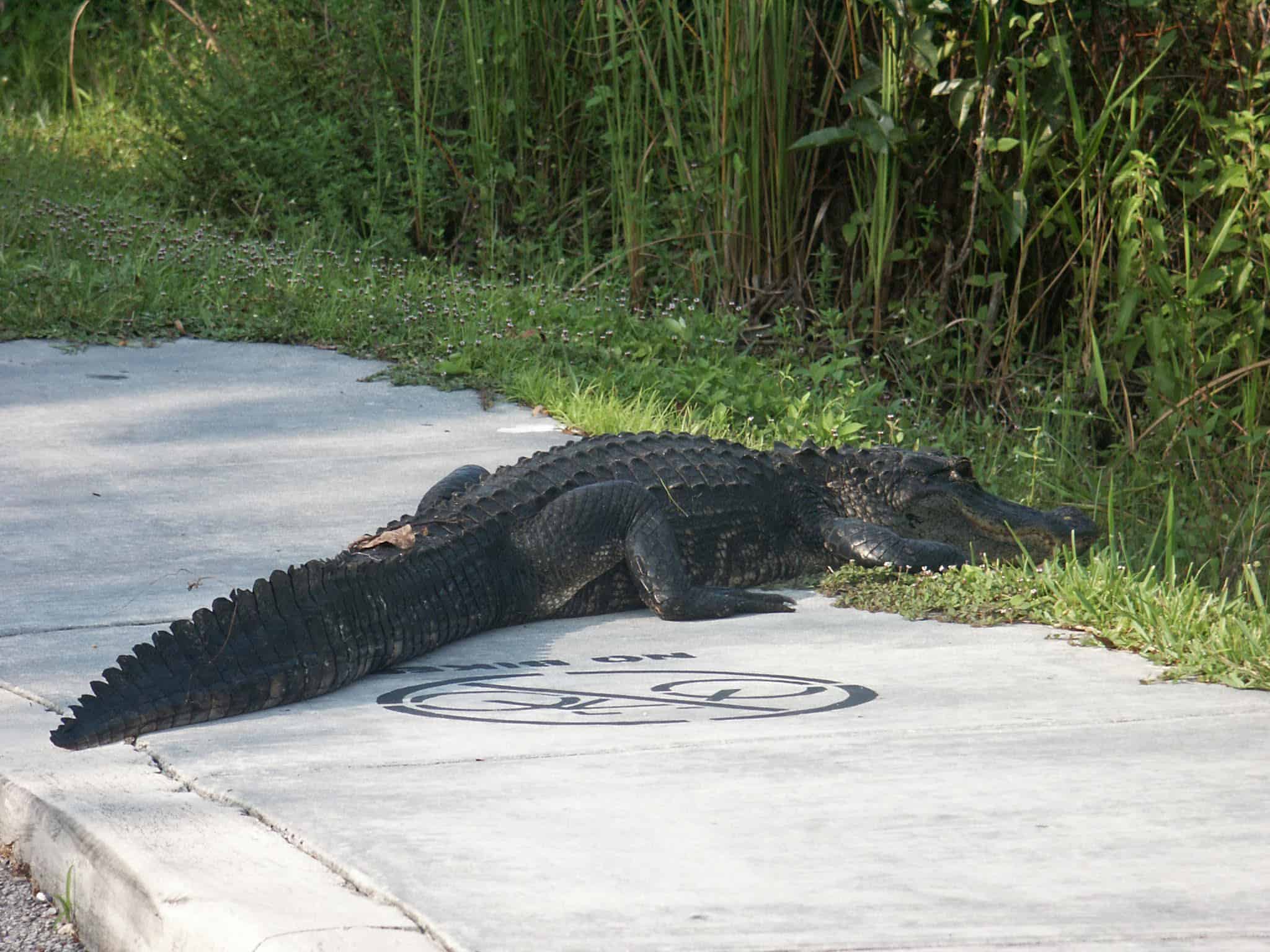
Residents can sign up to become independent gator trappers to help relocate the animals.
©Lingbeek/iStock via Getty Images
The North American alligator is the only alligator living in the country. They live in the southern states of Florida, Alabama, and Louisiana where there is plenty of humidity and moisture via swamps, bogs, and lakes.
A nuisance alligator must be over 4 feet to qualify. Alligators 3 feet and under are considered regular wildlife and action may not be taken by local offices.
The North American alligator is an ambush predator, lurking at the edges of water to catch unsuspecting prey like frogs, birds, rodents, fish, and pets.
These animals pose a high risk of attacking backyard pets, children, and damaging property or blocking roadways.
If a nuisance alligator is in the area, call the local wildlife offices for assistance. Provide location, time, and a photo of the animal. Alternatively, residents may contact government-approved trackers to capture and relocate nuisance alligators. Families should always watch their children and keep pets on leashes near lakes and rivers and obey “no swimming” signs when posted.
Coyotes
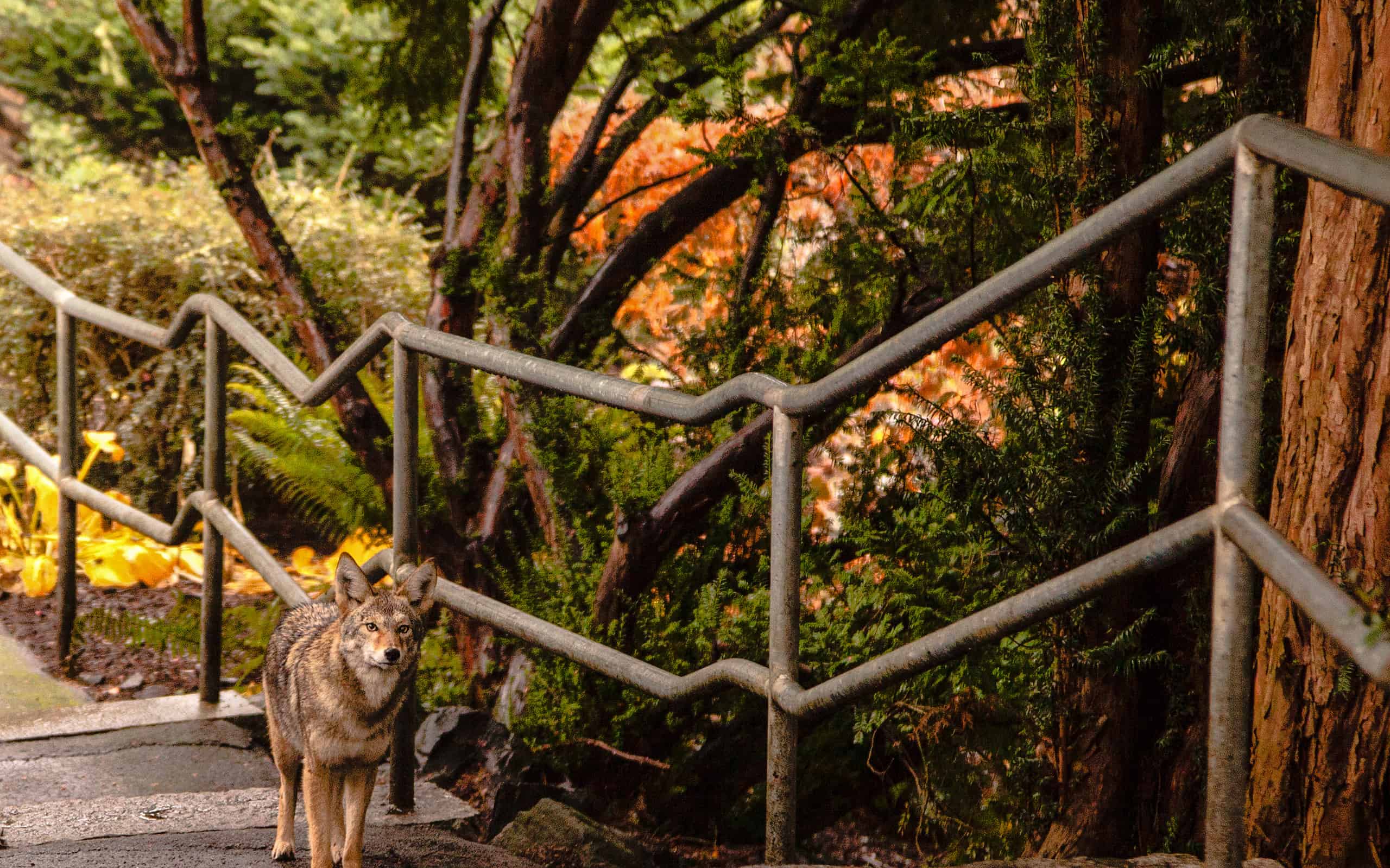
Educating children on differences between coyotes and dogs is important.
©northohana/iStock via Getty Images
Coyotes are adaptive predators, capable of surviving most types of habitats and weather conditions. They are spread across the U.S. and Canada, with some states like Connecticut struggling with nuisance coyotes every night.
Coyotes are opportunistic feeders, seizing the chance to eat when the moment arises. Typically, they feed on rodents, snakes, frogs, fish, birds, eggs, carrion, fruits, berries, and sometimes small pets.
Small-breed dogs and outdoor cats are easy prey for coyotes, and many will break into yards to grab one if unattended. Coyotes make dens in crawl spaces under the house or open sheds, leading to accidental confrontations. And like in cartoons, coyotes sneak onto farms to feast on poultry, eggs, and livestock.
Families must block crawl spaces or open spaces around the house, build strong fences to protect their yards and farms, and never leave small pets or children unattended. Contact licensed coyote trappers to remove a nuisance coyote.
Skunks

These animals reduce the tick population, which helps to protect neighborhood pets.
©beebatch/iStock via Getty Images
Skunks do not pose any direct threat to humans because they prefer to avoid confrontations at all costs. Their unique stripe and foul spray are a deterrent against predators. In fact, many states legally allow homeowners to keep a domestic skunk as a pet. In nature, skunks are found across the U.S. and Canada.
Skunks are omnivores, filling their diet with insects, worms, grubs, rodents, lizards, frogs, snakes, eggs, roots, berries, leaves, grasses, and nuts.
The main issue with skunks is their strong scent glands and light property damage. Skunks dig up gardens, damage garbage cans and fences, and may hide in porches or crawlspaces to rest.
Prevent skunk activity by sealing garbage cans, using wire to protect crops, and closing off entryways in and around the house.
Armadillos
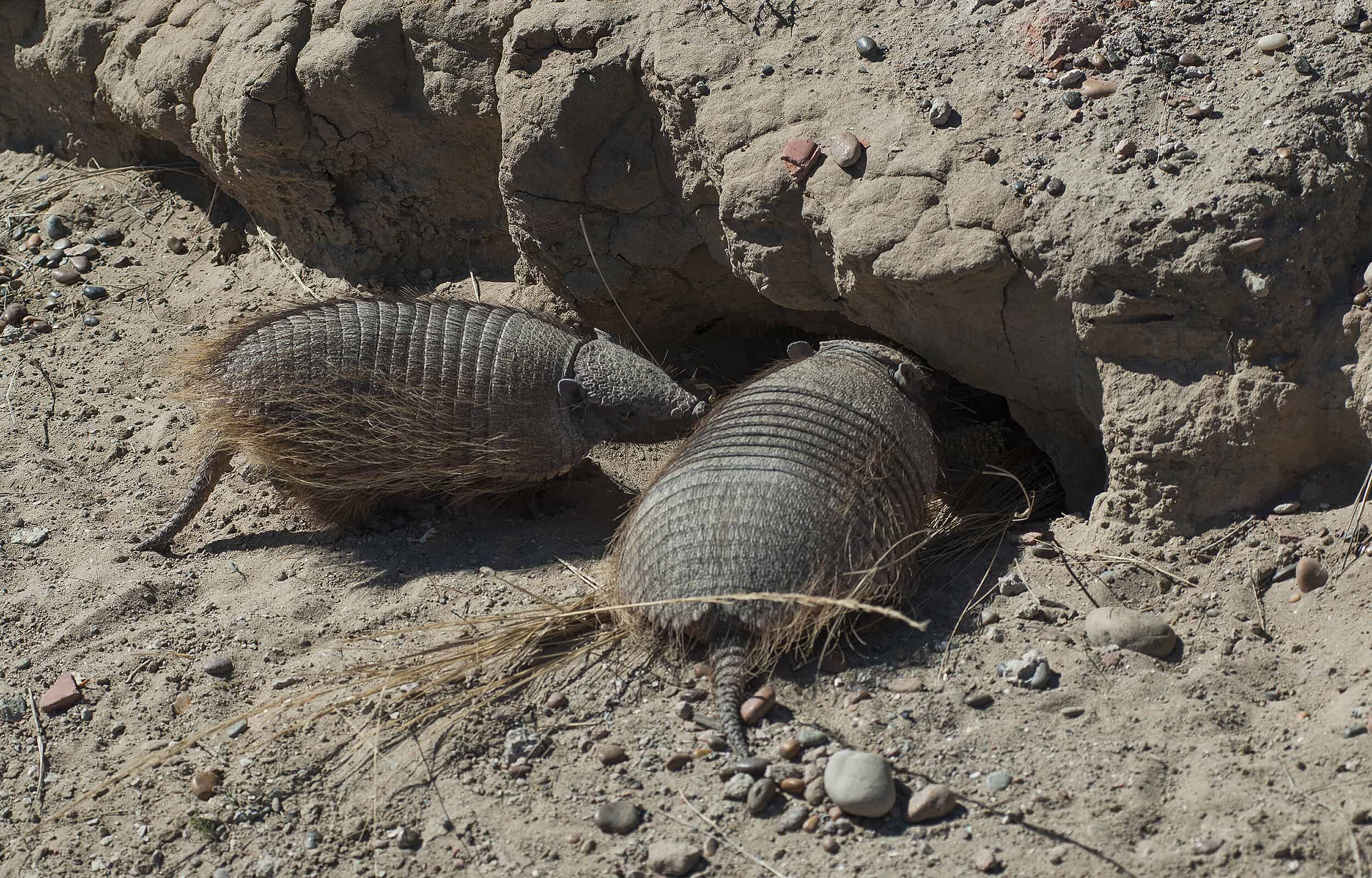
Hairy armadillos have small hairs on their body to help them detect movement underground.
©Foto4440/iStock via Getty Images
Armadillos are adorable little armored mammals that live in forests, grasslands, and semi-desert regions along the Westcoast and southeast regions.
They mostly feed on insects like grubs and termites but will eat vegetables, fruits, eggs, and carrion.
Armadillos pose a threat to gardens when they dig up the soil and disturb flower beds.
To prevent armadillo activity, build a 12-inch fence around the property, use insecticides to reduce insect and grub reproduction, and use motion light sensors.
Bats

A colony of bats living in an attic may cause stress to the roof and produce a lot of feces.
©lillitve/iStock via Getty Images
There are over 45 different species of bats living in the U.S. They are nocturnal animals, residing in caves, rock crevices, old buildings, bridges, or anywhere to deter lighting during the day.
Contrary to popular belief, bats are mostly insectivores, eating mosquitos and other small bugs. Some bats feed on nectar from assorted plants.
According to the Center for Disease Control (CDC), bats are the leading cause of rabies in the U.S. Bats also roost in attics and scare people throughout the night.
To prevent bat activity, use motion sensor lights to disrupt their roosting or use high-frequency sound emitters.
Opossums
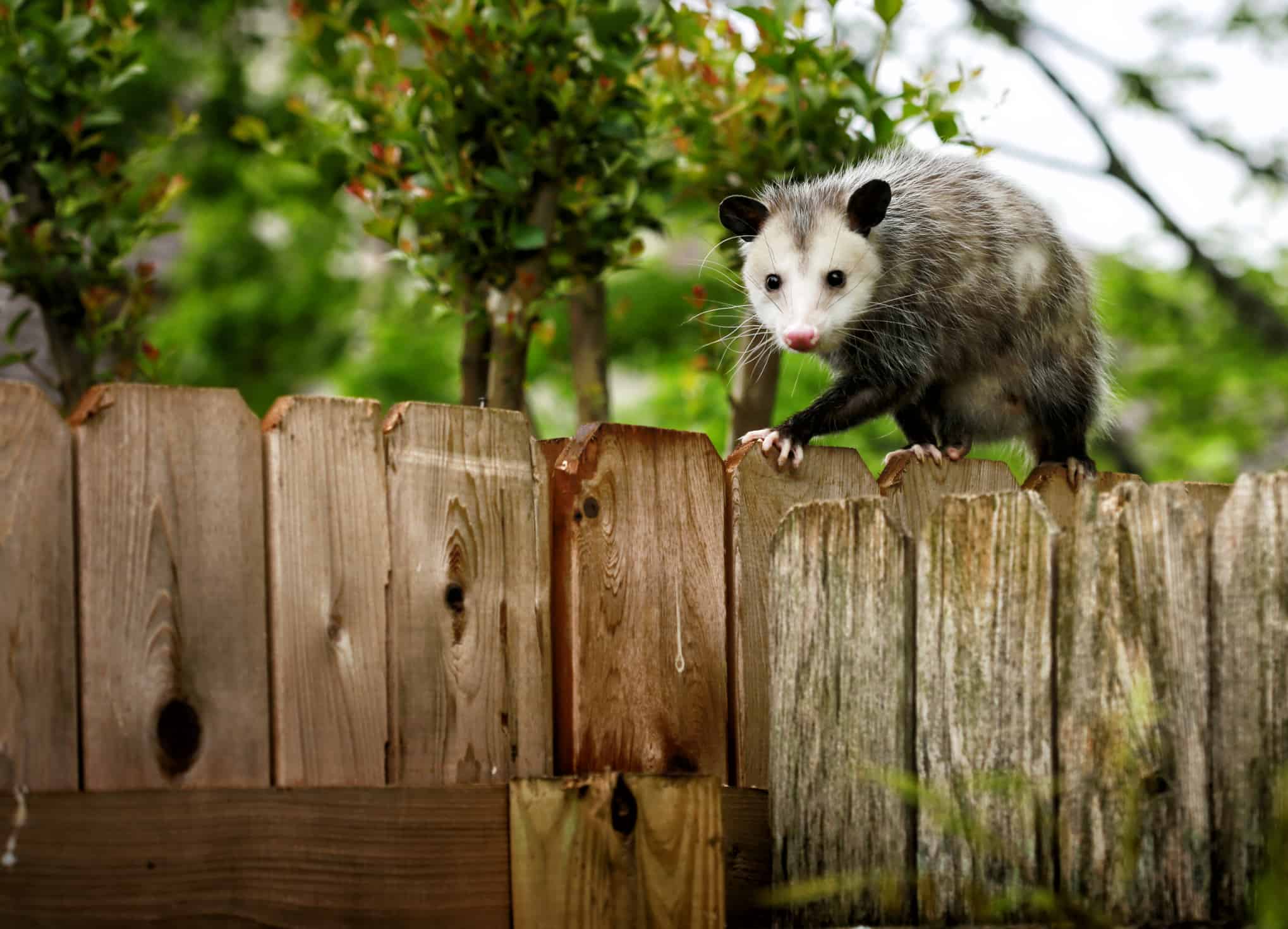
The opossum is a living fossil and the only marsupials alive in North America.
©galinast/iStock via Getty Images
Opossums are the only living marsupials in North America.
They provide a great service to the environment by feeding on ticks, as well as worms, reptiles, frogs, birds, eggs, mice, berries, and carrion.
Most opossums will avoid humans, but they will cause property damage to fences, trash cans, and yards while scavenging for food.
Prevent opossum encounters by using wire mesh fences, porcupine wire, or LED motion sensor lights.
The photo featured at the top of this post is © EleanorAbramson/Shutterstock.com
Thank you for reading! Have some feedback for us? Contact the AZ Animals editorial team.






